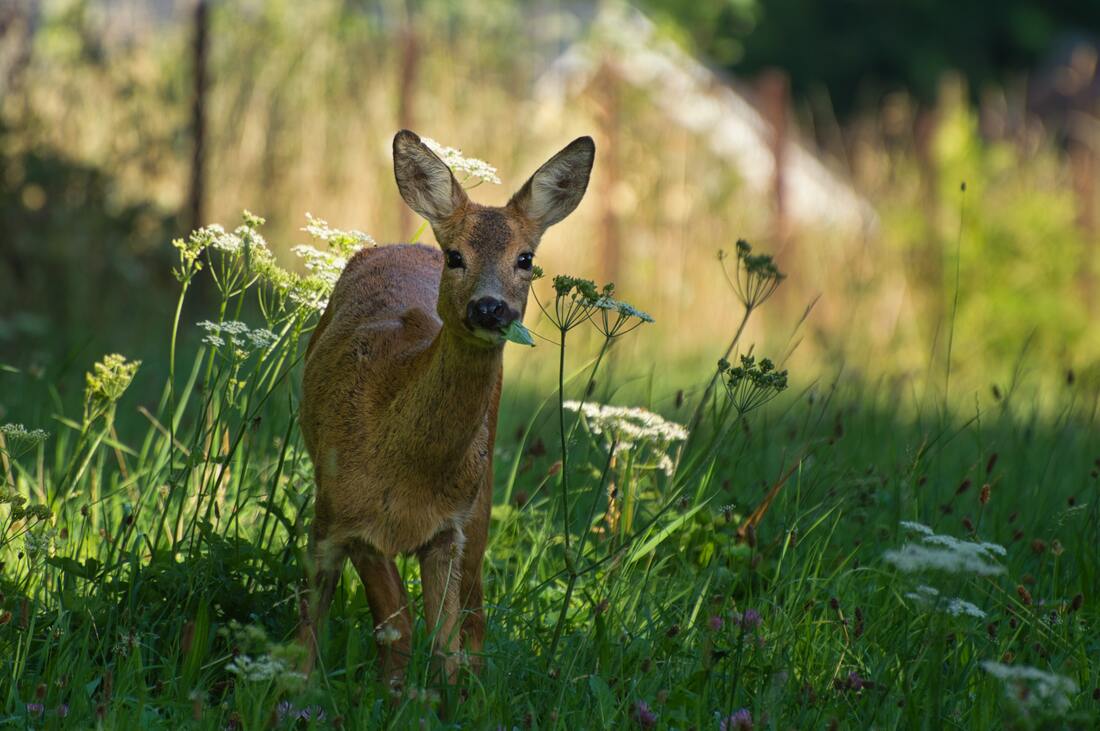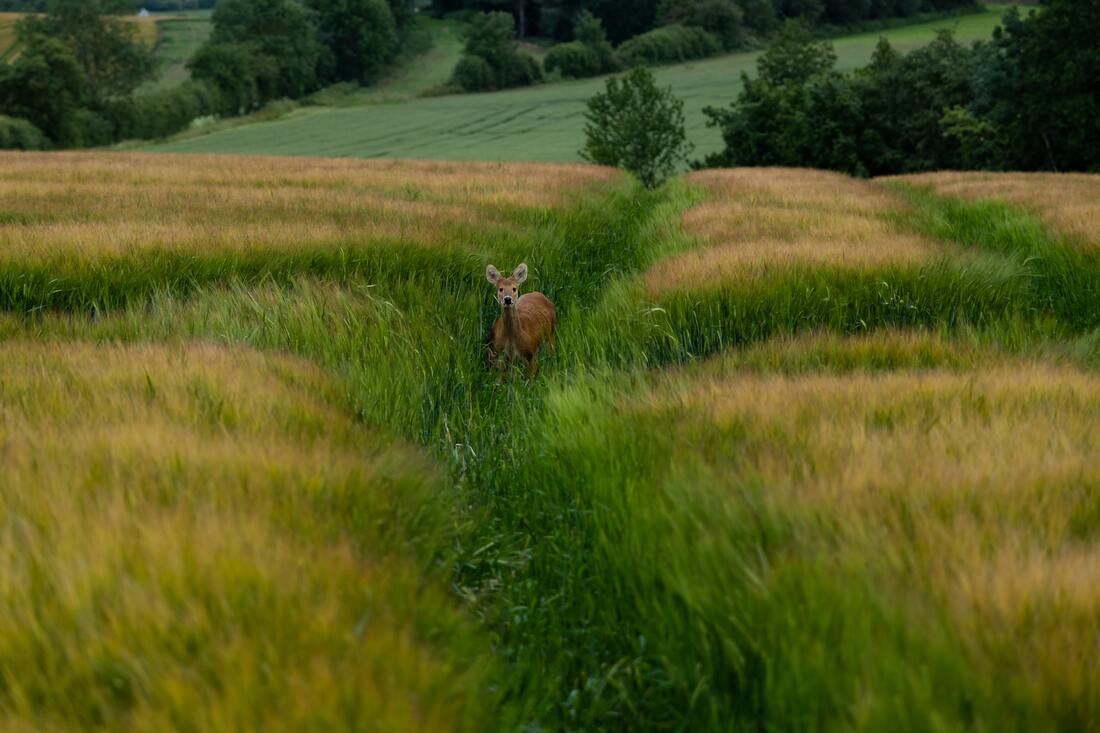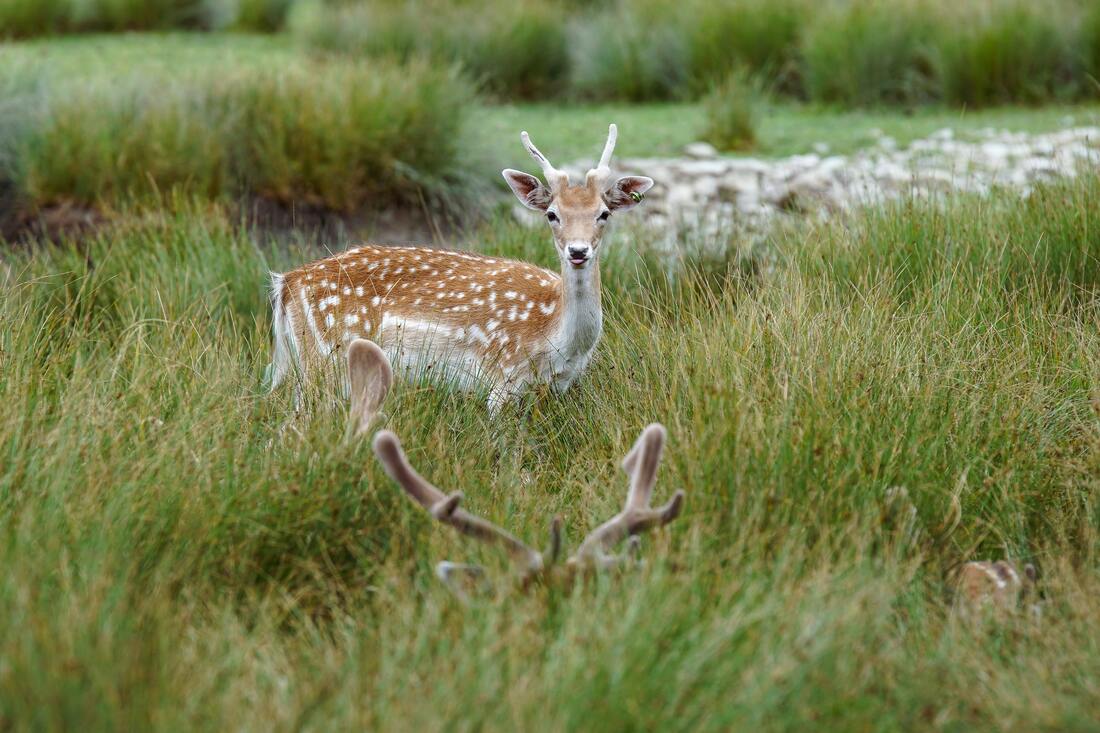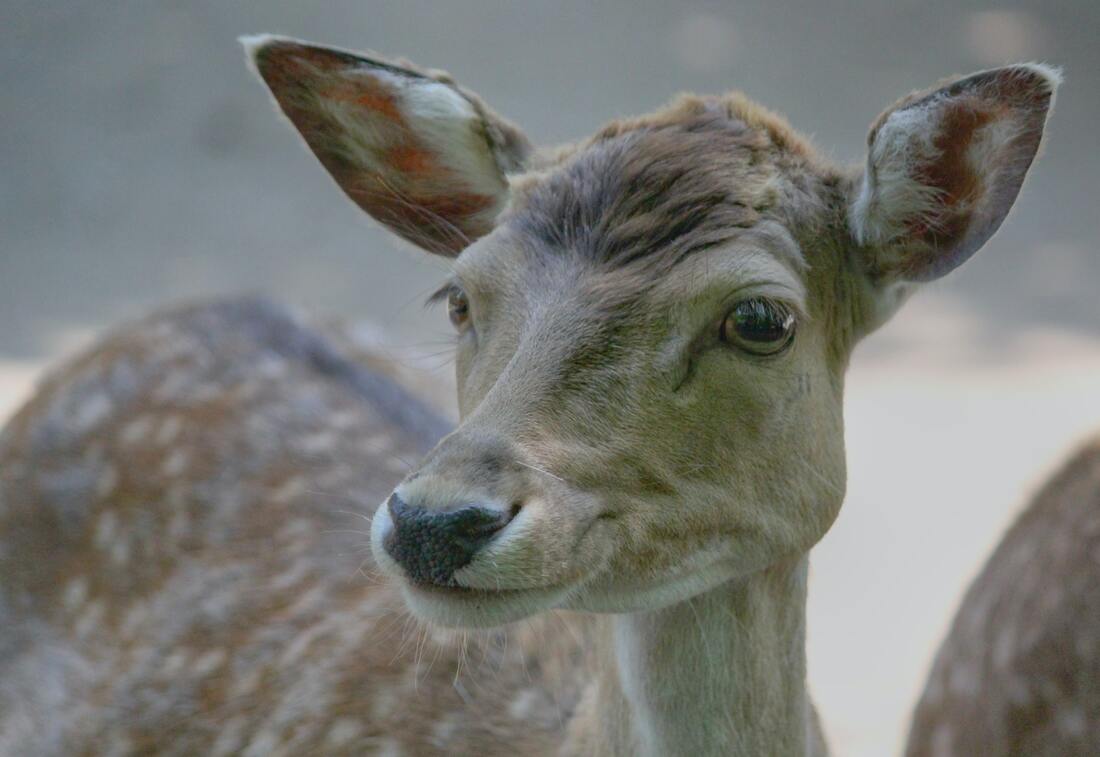Roe Deer
The roe deer is the most commonly found deer in the UK, found across the country in wooded areas, grasslands and on farmlands. Male roe deer's are often referred to as 'buck' with the female being a 'doe'. Identifiable by their lack of tail, with a light patch of fur in its place, slender body and brown fur; though this can change shade from summer where it had a more reddish tone to winter with a grey tone.
Roe deer are 1 - 1.5 metres long, just under a metre tall and weigh between 10- 25kg. They are herbivores and their diet generally consists of grass, ferns, leaves and buds. The average life expectancy of a roe dear is 7 years.
Mating season for the roe deer is between July and August, with young being born between May and June, with the doe giving birth to two or three young. Offspring are known as 'kids' or 'fawns', when born they have a spotted coat to assist in masking them from predators, these spot begin to fade and disappear with age.
Roe deer are protected under the Deer Act of 1991.
Roe deer are 1 - 1.5 metres long, just under a metre tall and weigh between 10- 25kg. They are herbivores and their diet generally consists of grass, ferns, leaves and buds. The average life expectancy of a roe dear is 7 years.
Mating season for the roe deer is between July and August, with young being born between May and June, with the doe giving birth to two or three young. Offspring are known as 'kids' or 'fawns', when born they have a spotted coat to assist in masking them from predators, these spot begin to fade and disappear with age.
Roe deer are protected under the Deer Act of 1991.
Fallow Deer
The fallow deer was introduced to the UK in Norman times and overtime has become naturalised. They are found across the country like the roe deer in wooded areas, grasslands and on farmland. Also like the roe deer male and females are referred to as 'bucks' and 'does'. Fallow deer can be identified by their chestnut-brown coat with white spots and a distinctive white rump and white-fringed tail.
Fallow deer are slightly bigger that the roe dear at 1.3- 1.8 metres long, reaching to over 1 metre in height and weighing between 31-63kg. Being herbivores their diet generally consists of grass, herbs, fungi, berries and nuts. The average life expectancy of a fallow dear is up to 16 years.
Fallow deer's are the only species of deer in the UK to grow palmate antlers, which grow and are shed yearly; becoming more complex over the years.
Roe deer's are also protected under the Deer Act of 1991.
Fallow deer are slightly bigger that the roe dear at 1.3- 1.8 metres long, reaching to over 1 metre in height and weighing between 31-63kg. Being herbivores their diet generally consists of grass, herbs, fungi, berries and nuts. The average life expectancy of a fallow dear is up to 16 years.
Fallow deer's are the only species of deer in the UK to grow palmate antlers, which grow and are shed yearly; becoming more complex over the years.
Roe deer's are also protected under the Deer Act of 1991.



